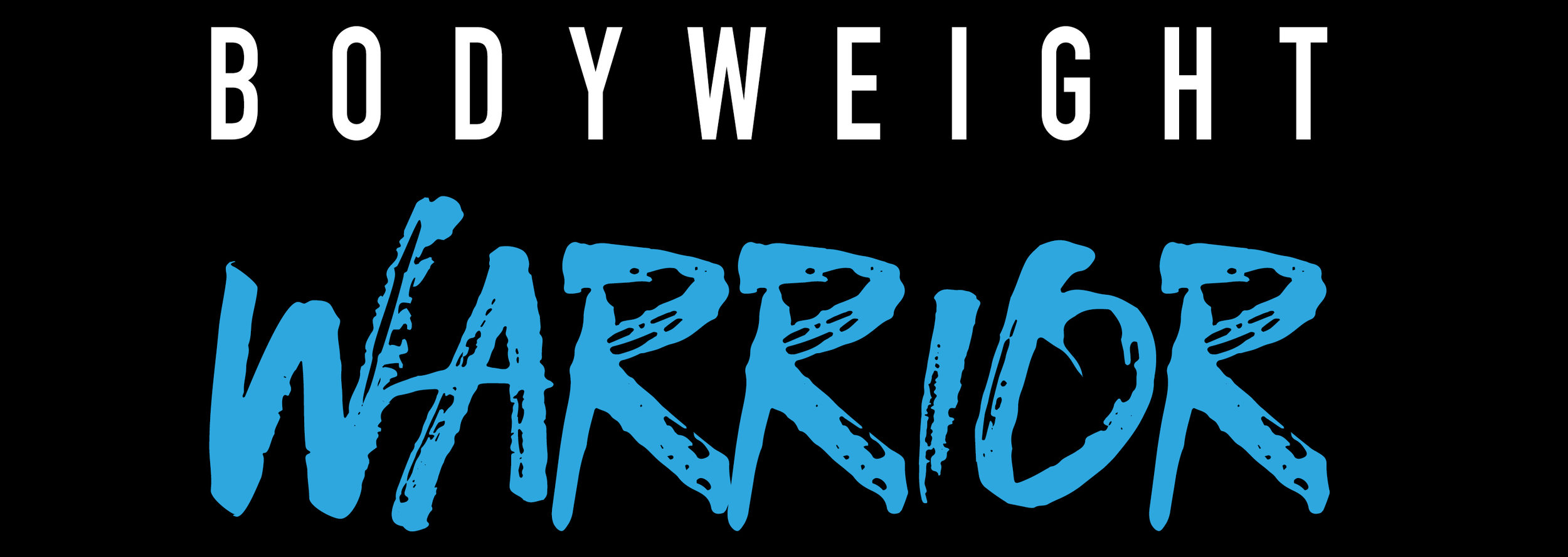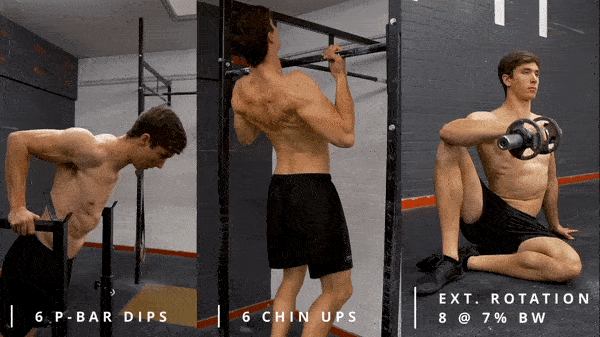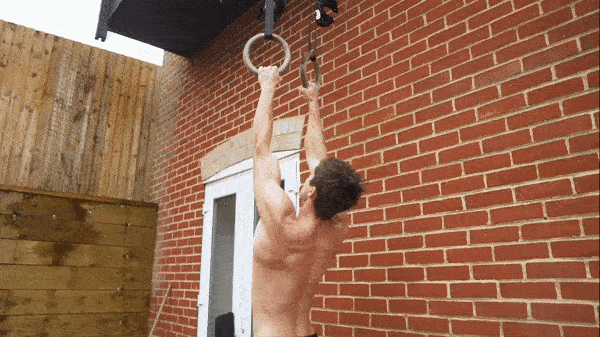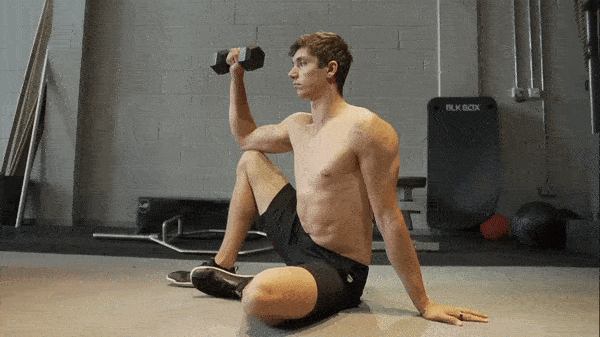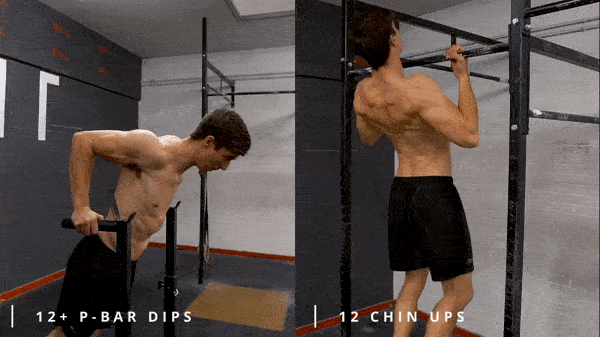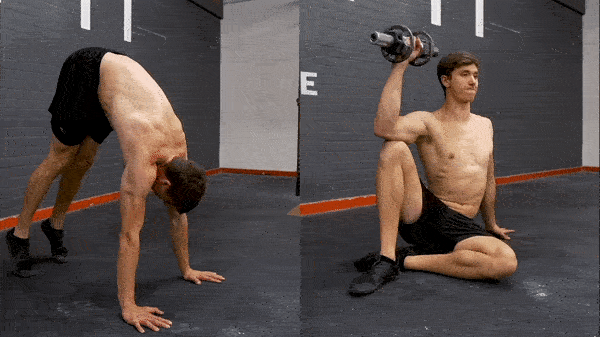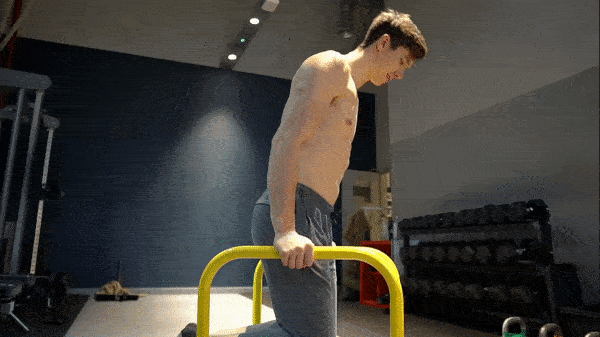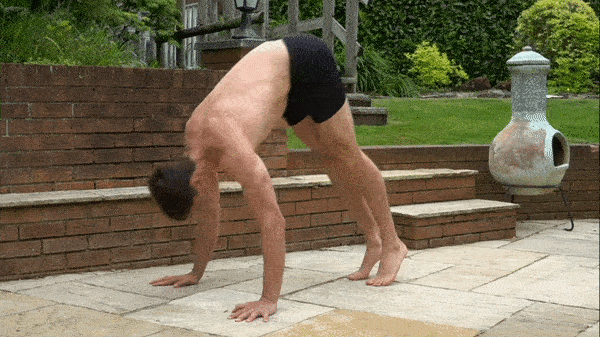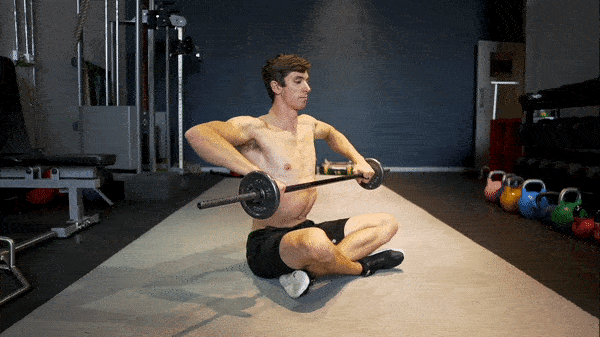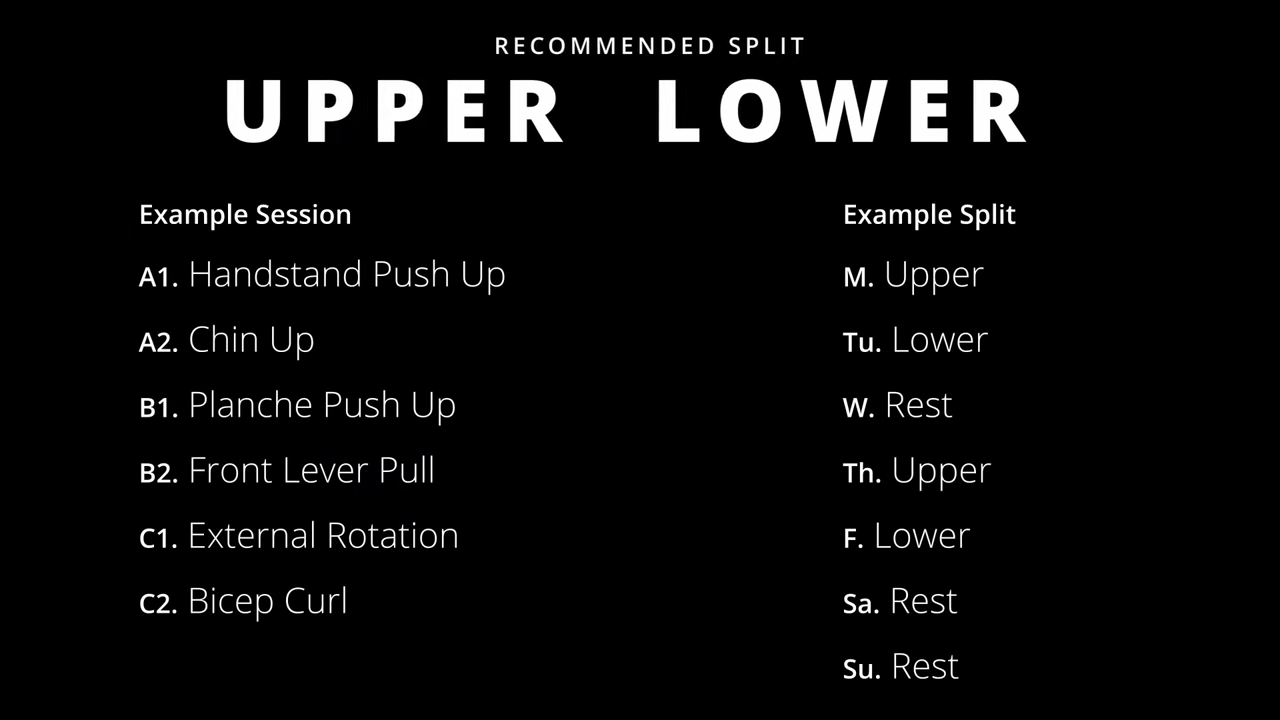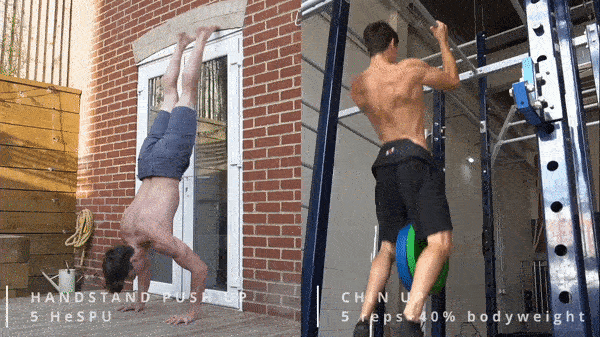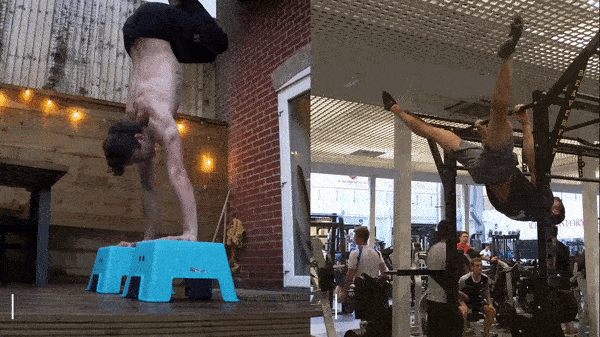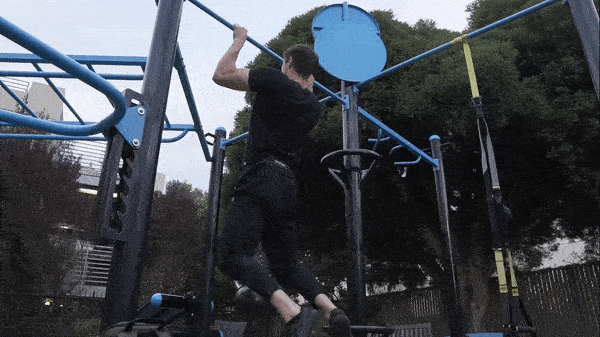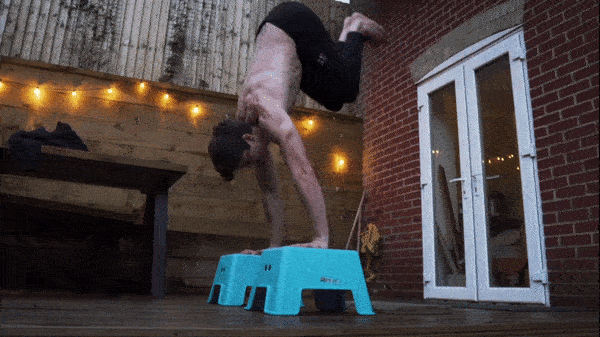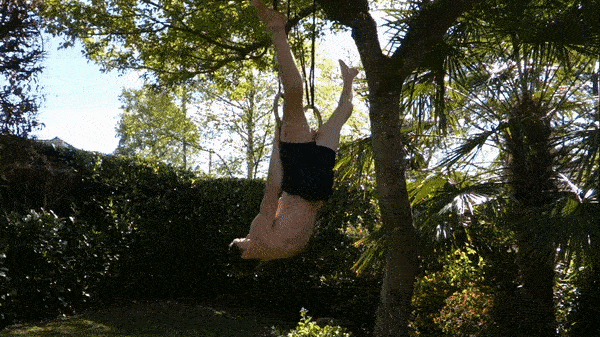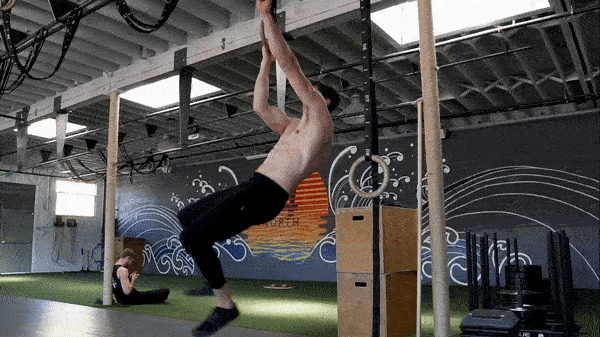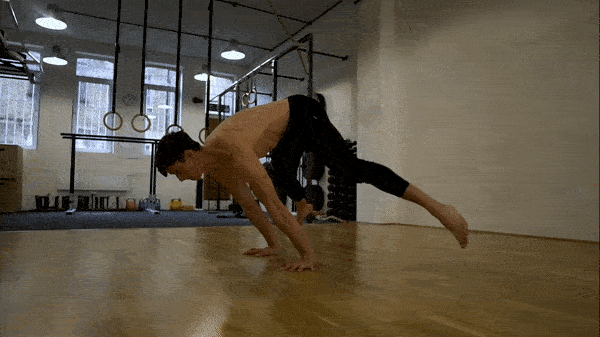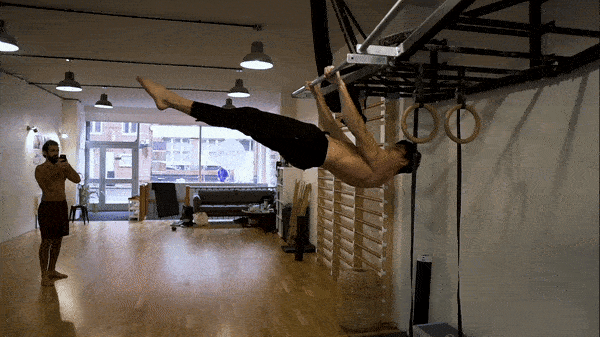How Strong Are You?! | Strength Levels
The bodyweight planche is an advanced level movement.
Achieving a planche, front lever, handstand pushup, dip and a one-arm chin-up are certainly top of most people’s lists when it comes to bodyweight strength movements - and for good reason! They are impressive demonstrations of strength and skill, ultimately mastery of your body! These make up my big 5 when it comes to bodyweight strength movements. This is because they give you the best results when it comes to your training. Getting there isn't always straightforward so I thought I’d outline some clear strength levels so you can see a route through to the more advanced movements - each step of the way.
An important point to start with is that strength is highly individual. Genetic and anatomical factors such as body proportion, muscle fibre, neural drive and muscle attachments are all going to affect each of our individual abilities to gain and develop strength. For myself, being 6 foot 3 and 90kg with long arms, it’s probably not the best setup when compared to your average Olympic gymnastic that is about 5 foot 6 and weighs only 60kg.
Excuses aside, I’ve seen people knock out 8 pull-ups without ever training for it and I’ve also seen individuals struggle to get 1 pull-up after 6+ months of training. It’s important to understand yourself if you want to make the best progress going forwards.
*Note: this blog is the sister blog to the bodyweight flexibility levels blog (and video). If you want to achieve greater flexibility then that’s a great place to start. Let’s get into it!
My big 5 of calisthenic strength movements!
STRENGTH BASICS
The first strength level is Basic and when I say this I don’t mean beginner. I mean the basic level of strength needed that everyone should be working to get towards. Basics include completing 6 parallel bar dips, 6 chin-ups as well as external rotation (such as Cuban rotations) x 8 @ 7% bodyweight.
The key Basics strength movements.
The dip and the chin-up are the bread and butter of basic calisthenics and will equip you with general strength that will place you well for moving on to more difficult moves, and also other sports. The external rotation is added as a measure of structural balance but also a protective measure as we move further into skills.
If you are a female athlete you could drop the number of chin-ups to 4 if you are not so fussed about developing absolute strength but 6 is very achievable in the longer term. These are important numbers to hit!
1) 6 X PARALLEL BAR DIPS
To learn how to execute a solid dip, please see my YouTube tutorial here.
2) 6 X CHIN-UPS
To learn how to develop your chin up, please see my YouTube tutorial here.
3) EXTERNAL ROTATION X 8 @ 7% OF BODYWEIGHT
To learn how to develop your rotator cuffs and external rotation, please see my YouTube tutorial here.
TRAINING STRUCTURE
In terms of Basics training, I recommend training full body at a frequency of 2-3 times a week with the intention of building up the total amount of reps completed.
BASICS +
Next up with have basics + which is an extension of basics and an improvement on general strength. At this level, I’d expect to see 12+ parallel bar dips with a good range of motion, 12 chin-ups, 10 pike pushups with feet on the floor, and 11% of BW on the side external rotation.
These are great numbers to hit and the level I’d suggest achieving before moving on to specific skill movements such as the planche and one-arm chin-up. Understand that it’s really important to build a base!
The first two Basics + movements.
The third & fourth Basics + strength movements.
1) 12 X FULL ROM PARALLEL BAR DIPS
To learn how to execute a solid dip, please see my YouTube tutorial here.
2) 12 X CHIN-UPS
To learn how to develop your chin up, please see my YouTube tutorial here.
3) 10 X PIKE PUSHUPS
To learn how to develop your pike pushup, please see my YouTube tutorial here.
Pike pushups help to develop overhead strength.
4) EXTERNAL ROTATION WITH 11% OF BW
To increase your external rotation strength, please see my YouTube tutorial here.
TRAINING STRUCTURE
At this stage, I recommend switching from full-body routines and adopting an upper/ lower split which could run from Monday to Friday. Not training full body helps us train at a higher intensity, which is needed for growth.
A suggested Basics + training split.
Before moving onto intermediate (which is significantly more difficult) I’d recommend that you work on a chest-to-wall handstand pushup with partial reps, adding weight to the chin-up, and beginning to work on some straight-arm skills such as the tuck planche and tuck front lever.
INTERMEDIATE
At the intermediate stage, I’d look for 5 x reps with a chest-to-wall handstand pushup, Pullups of 5 reps with an additional 40% of bodyweight, a tuck planche negative, and a straddle front lever negative.
These skills are difficult (it’s quite a jump from Basics +) so do take progress at your own pace and understand that you will be better/ worse at different things. Generally speaking, most people hit the handstand and chin-up standards before they hit the straight-arm movements but this is not the rule for everyone. I feel that it’s advantageous to develop bent arm strength before straight arm strength but you can certainly do both at the same time.
The first & second strength standard movements.
The third & fourth Intermediate strength standards.
1) 5 X CHEST-TO-WALL HANDSTAND PUSHUPS
To learn how to develop your chest-to-wall handstand, please see my YouTube tutorial here.
2) PULLUPS WITH 40% OF BW X 5 REPS
See me work on my heavy-loaded pull-up strength in this YouTube video.
3) PLANCHE TUCK NEGATIVE
To learn how to develop your planche tuck negative, please see my YouTube tutorial here.
4) STRADDLE FRONT LEVER NEGATIVE
To learn how to develop your straddle front lever, please see my YouTube tutorial here.
At this level, I’d continue to work on the handstand pushup, gradually introducing more range of motion by elevating the hands from the floor as well as introducing some freestanding work so that you can learn how to produce strength while balancing. I’d also shift the pulling work to more one-arm work if you are after the one-arm chin-up. This could include one-arm chin-up negatives, archer rows, and archer pull-ups. That being said, go slow with one arm work as it can lead to tendonitis if overdone! Continue to develop straight arm strength, ideally, dynamic movements are your best friend so working on the tuck planche press, stalder press and front lever pulls.
TRAINING STRUCTURE
For intermediate strength levels, I recommend splitting your workouts into BAS (bent arm strength) and SAS (straight arm strength). Legs can be trained separately.
A suggested Intermediate split.
ADVANCED
For an advanced level of strength, I like to see a 90-degree handstand pushup, one arm chin-up, straddle planche and full front level. If you can perform one of these movements then you have a high level of strength - but if you can perform all four at the same time then that’s pretty damn impressive! Really though, these movements are now another stepping stone as the bar keeps being increased over time with some incredible athletes out there.
Please recognise that these extreme feats of strength that you see on social media are the 1% and you do not need to compare yourselves to them - we are all on our own journeys! I’ve been training for close to a decade and I’m somewhere in between the intermediate and advanced spectrum with which I’ve achieved all of the advanced movements at some point but currently, I do not have all four.
1) 90-DEGREE HANDSTAND PUSHUP
See my guide to handstand pushup training in my YouTube tutorial here.
2) ONE ARM CHIN-UP
See my guide to one-arm chin-up training in my YouTube tutorial here.
3) STRADDLE PLANCHE
See my guide to straddle planche training in my YouTube tutorial here.
4) FRONT LEVER
See my guide to working on your front lever here.
TRAINING STRUCTURE
Due to the difficulty and complexity of these advanced movements, dedicated sessions will likely be needed to achieve them safely and competently.
SUMMARY
And that’s it for calisthenic strength training levels! Hopefully, this guide helps give you a sense of where you are currently, as well as a taster for what lies just around the corner. Happy training!
WHY NOT FOLLOW ALONG ON YOUTUBE?
Still Lost? Join the Trybe.
If you’re still struggling to find a plan, why not try my app Trybe? There are 8 different handstand levels to work through beginner to intermediate alongside a variety of others working on strength, skills and flexibility.
